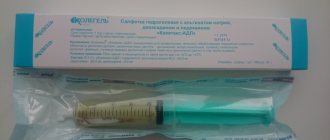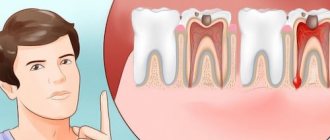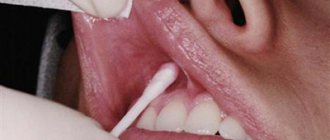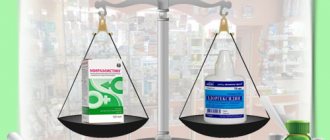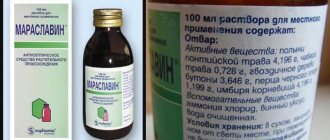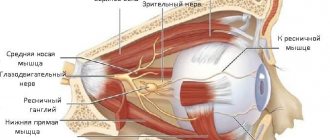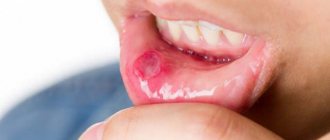714
More recently, visiting the dentist has been associated with pain, panic, discomfort and stress. Now everything has changed.
Pharmacology offers many drugs that help carry out any dental procedure or treatment painlessly.
In their work, dentists often resort to local anesthesia. One of the painkillers that has earned the trust of doctors and patients is Lidoxor.
Lidocaine spray - how effective it is for toothache
Toothache is one of the most severe and painful. In some cases, even pharmacy painkillers are not able to bring relief. Of course, you cannot tolerate such severe discomfort - you need to immediately run to the doctor. However, it is not always possible to promptly seek medical help, and then the only option to relieve acute toothache is to take painkillers. One of these drugs is Lidocaine. The product is available in various forms, including a spray for self-use. In general, this drug in dentistry is often used as an anesthetic before treatment, which indicates its unconditional effectiveness. Today we’ll talk about the effect of “Lidocaine” on teeth, its release forms, indications for use, and we will also provide simple and understandable instructions for using the spray.
In what forms is the drug produced, components
Today, the drug is produced in 3 forms: in ampoules - an injection for the tooth, in the form of a gel with Lidocaine and a spray for the teeth. Further in this article we will concentrate on considering the spray, which is a colorless liquid, but with a pleasant menthol scent. The main active ingredient is the anesthetic of the same name - its concentration in a solution of 3.8 g (one bottle) is 4.8 mg. The composition of the drug also includes the following substances:
- propylene glycol,
- mint oil,
- ethanol solution – 96%.
A standard bottle holds approximately 650 doses. The kit includes a glass jar with a dispenser, a spray bottle and instructions for using the product.
Pharmacology and pharmacokinetics - highlights
The active component of the spray effectively reduces the susceptibility of nerve endings, and this happens by blocking the conduction of the corresponding impulses. Acting systemically, the substance also provides an effect similar to that of antiarrhythmic drugs, but its use for therapeutic purposes does not in any way affect the functioning of the heart. If Lidocaine is sprayed near the respiratory tract, it also prevents coughing and gagging.
The drug also prevents coughing and vomiting.
The drug is quickly absorbed, and if a small amount of the drug enters the gastrointestinal tract, the active component is inactivated. The action occurs within 5-10 minutes. Metabilized in the liver by 90-95%.
In what cases is it used?
In dental practice, Lidocaine is used in various forms, including as a spray. The drug helps to anesthetize a limited area of the mucous membrane, and also promotes vasodilation without tissue irritation. Below are the main indications for use:
- for dental treatment in the presence of any dental diseases,
- for tooth extraction,
- for problematic teething,
- with stomatitis,
- as part of professional cleaning and removal of deposits,
- before opening cystic neoplasms.
The drug is usually administered by injection.
To eliminate sensitivity before treatment, the drug is usually administered by injection. In the form of a spray, it is sometimes applied before an anesthetic injection. Many people are interested in how long dental anesthesia lasts and wears off. Usually the effect occurs within 5 minutes, lasts for 1-2 hours, after which sensitivity is restored. Therefore, it is not recommended to eat for some time after treatment, since you can accidentally injure your tongue. The spray is also widely used for toothache at home.
Purpose and forms of release
Lidoxor is an anesthetic drug containing lidocaine as the main active ingredient. The direct purpose of the drug is pain relief.
In dental practice it is used:
- For topical anesthesia.
- When disinfecting the oral cavity.
- In order to reduce the likelihood of irritation (which is especially important for patients prone to allergies).
The medicine has a pleasant smell and taste and does not cause negative sensations or discomfort during dental procedures.
Typically used before an anesthetic injection to minimize pain and discomfort from needle insertion . It exhibits its maximum effect 5-7 minutes after treatment of the mucous membrane.
Available in two forms - spray and gel. The composition and pharmacological properties remain unchanged, only the method of use and the type of flavoring additives added change. The spray is produced in 30 ml containers, the gel is produced in 45 g tubes.
In what situations is Lidocaine in spray form contraindicated?
There is a list of contraindications to the use of the anesthetic in question. Such pathological phenomena include the following conditions:
- intolerance to the active substance,
- allergy to anesthetic,
- if the patient has had seizures in the past as a result of taking any form of lidocaine,
- frequent fainting,
- bradycardia,
- weak sinus node
- some pathologies of the heart and blood vessels.
The drug is not used when taking impressions of teeth.
Also, the spray is not used when taking impressions of teeth - the risk of penetration of the material into the respiratory system is too great. Before using the product, the specialist must make sure that the patient has no contraindications.
Instructions and dosage
Lidocaine spray is intended for spraying onto the mucous surface in the problem area where sensitivity needs to be blocked. Let's figure out how to use it correctly and how to use Lidocaine to numb a tooth. The scheme here is very simple: before applying the drug, the bottle needs to be shaken thoroughly, while holding it strictly vertically. 3-5 sprays are enough to provide the required degree of anesthesia and prevent the absorption of too high concentrations of substances into the blood.
If we are talking about anesthetizing an area of the oral mucosa in a child, then we should do it differently. To begin with, the product must be sprayed onto a small piece of gauze, which must then be applied to the affected area. This method of applying the product is used so as not to inadvertently scare the baby, and also not to provoke a burning sensation in his mouth. For patients suffering from impaired liver and kidney function, the dosage should be reduced by at least 40%1.
Lidocaine spray and EMLA: what is the difference?
The drugs differ in composition. If the spray contains only one substance - lidocaine, then EMLA cream contains lidocaine along with prilocaine.
Lidocaine and prilocaine belong to the class of amides of intermediate action. Their effect lasts on average 1-1.5 hours.
The anesthetic effect of lidocaine is 4 times higher than that of novocaine. It does not penetrate well through the surface epithelium of the skin. Therefore, the spray is more often used when performing manipulations on the mucous membranes - there the effectiveness of pain relief is higher.
Prilocaine is slower but longer acting than lidocaine and is less toxic. The combination of two anesthetics in EMLA cream allows you to prolong the effect of the drug and provide it with additional functions. For example, with ELMA the depth of pain relief depends on the duration of application, while with lidocaine spray the effect extends only to the superficial layers of the skin and then only when additional conditions are created (applying a patch or film that prevents moisture evaporation). Thus, the cream is suitable for both procedures performed on the skin and those performed on the mucous membranes.
Possible side effects
We figured out how to use Lidocaine spray, and now we’ll find out what side effects the drug can cause. So, after applying the product, the patient may experience local negative reactions such as burning, redness of the mucous membrane or skin. As a rule, such manifestations disappear on their own immediately after the onset of the analgesic effect. There is also a risk of developing allergies, which can manifest as itching and rashes. In extremely rare situations, anaphylactic shock occurs.
Some anxiety is likely to appear as a reaction of the nervous system. In some cases, the drug leads to a decrease in heart rate or blood pressure. To decide whether it is possible to use Lidocaine anesthesia for dental anesthesia in relation to a particular patient, the doctor must first make sure that he has no contraindications to the use of the drug.
Lidocaine spray for local use. dosed 4.6mg/dose 38g
Registration Certificate Holder
SYNTHESIS (Russia)
Dosage form
Medicine - Lidocaine-Akos
Description
Spray for local and external use
in the form of a transparent, colorless or yellowish liquid.
1 dose
lidocaine hydrochloride monohydrate 4.6 mg
Excipients
: ethanol 96% (rectified ethyl alcohol, “Extra” grade) - 18.4 mg, propylene glycol - 4.6 mg, sodium hydroxide - 0.23 mg, sodium saccharinate dihydrate (sodium saccharin) - 0.138 mg, racementol (racemic menthol) - 0.092 mg, water purified - up to 0.046 g.
340 doses - plastic bottles with a spray nozzle (1) - cardboard packs. 650 doses - plastic bottles with a spray nozzle (1) - cardboard packs.
Indications
For terminal (superficial) anesthesia of mucous membranes: in dentistry, in otorhinolaryngology, in obstetrics and gynecology, for instrumental and endoscopic examinations, in surgery and dermatology, radiographic examination (elimination of nausea and pharyngeal reflex).
Contraindications for use
Use for tonsillectomy and adenotomy in children under 8 years of age;
hypersensitivity to lidocaine. With caution
during instrumental studies (rectoscopy) in patients with hemorrhoidal bleeding, local infection in the area of application, trauma to the mucous membrane or skin in the area of application, severe somatic pathology, epilepsy, bradycardia, cardiac conduction disorders, impaired liver function, severe shock, young children, elderly patients, during pregnancy and lactation.
pharmachologic effect
Local anesthetic for superficial anesthesia. The action is due to the blockade of voltage-dependent sodium channels, which prevents the generation of impulses at the endings of sensory nerves and the conduction of pain impulses along nerve fibers.
When applied topically, it dilates blood vessels and does not have a local irritating effect. Has an analgesic effect.
The effect develops 1-5 minutes after application to mucous membranes or skin and lasts 30-60 minutes.
Drug interactions
Cimetidine and propranolol reduce the hepatic clearance of lidocaine (decreased metabolism due to inhibition of microsomal oxidation and decreased hepatic blood flow) and increase the risk of toxic effects (including stunned state, drowsiness, bradycardia, paresthesia).
Barbiturates, phenytoin, rifampicin (inducers of microsomal liver enzymes) reduce effectiveness (an increase in dose may be required).
When prescribed with ajmaline, phenytoin, verapamil, quinidine, amiodarone, the negative inotropic effect may be enhanced. Co-administration with beta-blockers increases the risk of bradycardia.
Curare-like drugs enhance muscle relaxation.
Procainamide increases the risk of developing central nervous system excitation and hallucinations.
With the simultaneous administration of lidocaine and hypnotics and sedatives, their inhibitory effect on the central nervous system may be enhanced.
With intravenous administration of hexobarbital or sodium thiopental against the background of the action of lidocaine, respiratory depression is possible.
Under the influence of MAO inhibitors, the local anesthetic effect of lidocaine may be enhanced.
With the simultaneous use of lidocaine and polymyxin B, an increased inhibitory effect on neuromuscular transmission is possible, so in this case it is necessary to monitor the patient's respiratory function.
Dosage regimen
Apply locally, externally. The dose depends on the indications and the area of the anesthetized surface.
Side effect
Local reactions:
a slight tingling sensation that disappears as the anesthetic effect develops (within 1 minute); Transient erythema, swelling and sensory disturbances may occur.
Allergic reactions:
very rarely - urticaria, angioedema, bronchospasm; in exceptional cases - anaphylactic shock. The use of the drug should be stopped immediately if any allergic reaction occurs.
After topical application, systemic effects rarely develop, because
Only a very small amount of the active substance can enter the bloodstream. From the side of the central nervous system:
very rarely - nervous excitement, systemic dizziness, insomnia, loss of consciousness and respiratory paralysis.
From the cardiovascular system:
decreased blood pressure, depression of myocardial function, bradycardia, cardiac arrest.
special instructions
Use with caution in patients with epilepsy, as well as bradycardia, cardiac conduction disturbances, impaired liver function and severe shock, especially when significant amounts of the drug can be expected to be absorbed when large areas of tissue are treated with high doses.
It is important to prevent lidocaine from entering the respiratory tract (risk of aspiration).
Application to the buccal mucosa is associated with a risk of dysphagia and subsequent aspiration, especially in children. If the sensitivity of the tongue and mucous membrane of the cheeks is impaired, the risk of biting them increases.
Lidocaine is well absorbed through mucous membranes (especially in the trachea) and damaged skin. This should be taken into account, especially when treating large areas of tissue in children.
In cases of use during surgical operations in the pharynx or nasopharynx, it should be taken into account that lidocaine, suppressing the pharyngeal reflex, enters the larynx and trachea and suppresses the cough reflex, which can lead to bronchopneumonia. This is especially important in children, as they are more likely to trigger their swallowing reflex. In this regard, the spray is not recommended for local anesthesia before tonsillectomy and adenotomy in children under 8 years of age.
Caution should be exercised when applying lidocaine to damaged mucous membranes and/or infected areas.
Lower doses should be used in weakened and elderly patients, in acute diseases, as well as in children - in accordance with age and general condition.
Effect on the ability to drive vehicles and machinery
During the treatment period, care must be taken when driving vehicles and engaging in other potentially hazardous activities that require increased concentration and speed of psychomotor reactions.
Use during pregnancy and breastfeeding
Restrictions during pregnancy - With caution. Restrictions when breastfeeding - With caution.
If local anesthesia is necessary and no safer treatment is available, lidocaine can be used during pregnancy.
Lidocaine is excreted in breast milk, but after topical use in normal therapeutic doses, the amount excreted in milk is too small to cause any harm to a nursing infant.
Use for renal impairment
Restrictions for impaired renal function - With caution.
In chronic renal failure, accumulation of metabolites is possible.
Use for liver dysfunction
Restrictions for liver dysfunction - With caution. The drug should be used with caution if liver function is impaired.
Use in elderly patients
Restrictions for elderly patients - Use with caution.
Use with caution in elderly patients.
Use in children
Restrictions for children - Use with caution. Use with caution in children. Use for local anesthesia before tonsillectomy and adenotomy in children under 8 years of age is not recommended.
Additional instructions for use
Before spraying the spray on the mucous membrane, you need to carefully study the instructions that come with the kit. There are several special points to consider when using Lidocaine. Let's take a closer look at them.
During pregnancy and lactation
The drug is allowed for use in therapeutic doses during pregnancy. However, you should consult your doctor before using it. As for the lactation period, in this case it is better to wait to use the drug while the child is breastfed.
Use during pregnancy should be agreed with your doctor.
Read more about dental treatment during pregnancy in our special article>>>
Use in childhood
Lidocaine in the form of a spray is approved for children, but there are some nuances here. So, for example, it is recommended to apply the drug to children under the age of 2 years in a special way: first, the product needs to be sprayed onto a small gauze pad, and then applied to the area of pain. It should be taken into account that in childhood the swallowing reflex occurs more often than in adults, therefore it is not recommended to spray the anesthetic directly.
This is what an allergy to lidocaine looks like in a child
“The doctor prescribed Lidocaine for us after we had a baby tooth with gumboil removed. He said to apply it on cotton wool and apply it to the swollen gum so that it doesn’t hurt too much. We used it for just a couple of days, everything healed quickly, and the child did not complain of pain. Of course, you’d better consult your doctor about this, but in general I know for sure that the spray can be used for children...”
Irina V., Penza, from correspondence on the woman.ru forum
For liver problems
The drug should be used with extreme caution by people suffering from renal and liver failure. As mentioned above, the therapeutic dosage in this case should be reduced by at least 40%. In addition, in such a situation, using the spray without prior approval from a doctor is strictly contraindicated. This restriction also applies to patients with arterial hypertension and epilepsy.
In old age
Elderly people should also be careful with the anesthetic. The spray cannot be used without a doctor's prescription. There is a possibility that the active ingredient will have a negative effect on the cardiovascular system, so before using the drug you should make sure that the patient does not have any heart problems.
In old age, the drug should be used with caution
Lidocaine may react with other medications, which also needs to be taken into account. However, it does not affect the functioning of the central nervous system, therefore it does not impose any restrictions on activities that require increased concentration.
Lidocaine spray for external and local use 10% 38g
Compound
Active substance:
| 1 dose | 1 fl. | |
| lidocaine | 4.6 mg | 3.8 g |
Excipients: peppermint leaf oil, propylene glycol, ethanol 96%.
Pharmacokinetics
Rapidly absorbed from mucous membranes (especially the pharynx and respiratory tract). The degree of absorption is determined by the degree of blood supply to the mucous membrane, the total dose, the localization of the site and the duration of application, the dosage form used. After application to the mucous membrane of the upper respiratory tract, it is partially swallowed and inactivated in the gastrointestinal tract. The time to reach Cmax when applied to the mucous membrane of the oral cavity and upper respiratory tract is 10-20 minutes.
Protein binding depends on the concentration of the drug and is 60-80% at a drug concentration of 1-4 μg/ml (4.3-17.2 μmol/l). It is distributed quickly (T1/2 distribution phase - 6-9 minutes), first enters well-supplied tissues (heart, lungs, brain, liver, spleen), then into adipose and muscle tissue. Penetrates the BBB and placental barrier, secreted into breast milk (40% of the concentration in maternal plasma).
Metabolized in the liver (90-95%) with the participation of microsomal enzymes by dealkylation of the amino group and cleavage of the amide bond with the formation of metabolites that are less active compared to lidocaine (monoethylglycine xylidine and glycine xylidine), T1/2 of which is 2 hours and 10 hours, respectively.
Excreted with bile and kidneys (up to 10% unchanged).
In liver diseases, the metabolic rate decreases and ranges from 50% to 10% of the normal value.
In chronic renal failure, accumulation of metabolites is possible.
Indications for use
For terminal (superficial) anesthesia of mucous membranes: in dentistry, in otorhinolaryngology, in obstetrics and gynecology, for instrumental and endoscopic studies, in surgery and dermatology.
Contraindications
The use of lidocaine in aerosol form for tonsillectomy and adenotomy in children under 8 years of age; hypersensitivity to lidocaine.
Caution should be used during instrumental studies (rectoscopy) in patients with hemorrhoidal bleeding, local infection in the area of application, trauma to the mucous membrane or skin in the area of application, severe somatic pathology, epilepsy, bradycardia, cardiac conduction disorders, impaired liver function, severe shock , in young children, elderly patients, during pregnancy and lactation.
Directions for use and doses
Apply locally, externally. The dose depends on the indications and the area of the anesthetized surface.
Storage conditions
At temperatures from 15 to 25°C. out of the reach of children.
Best before date
5 years. Do not use after the expiration date stated on the packaging.
special instructions
Use with caution in patients with epilepsy, as well as bradycardia, cardiac conduction disturbances, impaired liver function and severe shock, especially when significant amounts of the drug can be expected to be absorbed when large areas of tissue are treated with high doses.
It is important to prevent lidocaine from entering the respiratory tract (risk of aspiration).
Application to the buccal mucosa is associated with a risk of dysphagia and subsequent aspiration, especially in children. If the sensitivity of the tongue and mucous membrane of the cheeks is impaired, the risk of biting them increases.
Lidocaine is well absorbed through mucous membranes (especially in the trachea) and damaged skin. This should be taken into account, especially when treating large areas of tissue in children.
In cases of use during surgical operations in the pharynx or nasopharynx, it should be taken into account that lidocaine, suppressing the pharyngeal reflex, enters the larynx and trachea and suppresses the cough reflex, which can lead to bronchopneumonia. This is especially important in children, as they are more likely to trigger their swallowing reflex. In this regard, the spray is not recommended for local anesthesia before tonsillectomy and adenotomy in children under 8 years of age.
Caution should be exercised when applying lidocaine to damaged mucous membranes and/or infected areas.
Lower doses should be used in weakened and elderly patients, in acute diseases, as well as in children - in accordance with age and general condition.
Description
Local anesthetic.
Use in children
Use with caution in children. Lidocaine in aerosol form is not recommended for local anesthesia before tonsillectomy and adenotomy in children under 8 years of age.
Pharmacodynamics
Local anesthetic for superficial anesthesia. The action is due to the blockade of voltage-dependent sodium channels, which prevents the generation of impulses at the endings of sensory nerves and the conduction of pain impulses along nerve fibers.
When applied topically, it dilates blood vessels and does not have a local irritating effect. Has an analgesic effect.
The effect develops 1-5 minutes after application to mucous membranes or skin and lasts 30-60 minutes.
Side effects
Local reactions: a slight tingling sensation that disappears as the anesthetic effect develops (within 1 minute); Transient erythema, swelling and sensory disturbances may occur.
Allergic reactions: very rarely - urticaria, angioedema, bronchospasm; in exceptional cases - anaphylactic shock. The use of the drug should be stopped immediately if any allergic reaction occurs.
The frequency of systemic effects after topical application, because Only a very small amount of the active substance can enter the bloodstream.
From the side of the central nervous system: very rarely - nervous excitement, systemic dizziness, insomnia, loss of consciousness and respiratory paralysis.
From the cardiovascular system: decreased blood pressure, depression of myocardial function, bradycardia, cardiac arrest.
Use during pregnancy and breastfeeding
If local anesthesia is necessary and no safer treatment is available, lidocaine can be used during pregnancy.
Lidocaine is excreted in breast milk, but after topical use in normal therapeutic doses, the amount excreted in milk is too small to cause any harm to a nursing infant.
Interaction
Cimetidine and propranolol reduce the hepatic clearance of lidocaine (decreased metabolism due to inhibition of microsomal oxidation and decreased hepatic blood flow) and increase the risk of toxic effects (including stunned state, drowsiness, bradycardia, paresthesia).
Barbiturates, phenytoin, rifampicin (inducers of microsomal liver enzymes) reduce effectiveness (an increase in dose may be required).
When prescribed with ajmaline, phenytoin, verapamil, quinidine, amiodarone, the negative inotropic effect may be enhanced. Co-administration with beta-blockers increases the risk of bradycardia.
Curare-like drugs enhance muscle relaxation.
Procainamide increases the risk of developing central nervous system excitation and hallucinations.
With the simultaneous administration of lidocaine and hypnotics and sedatives, their inhibitory effect on the central nervous system may be enhanced.
With intravenous administration of hexobarbital or sodium thiopental against the background of the action of lidocaine, respiratory depression is possible.
Under the influence of MAO inhibitors, the local anesthetic effect of lidocaine may be enhanced.
With the simultaneous use of lidocaine and polymyxin B, an increased inhibitory effect on neuromuscular transmission is possible, so in this case it is necessary to monitor the patient's respiratory function.
Impact on the ability to drive vehicles and operate machinery
During the treatment period, care must be taken when driving vehicles and engaging in other potentially hazardous activities that require increased concentration and speed of psychomotor reactions.
How to dispense in pharmacies and storage rules
The drug can be used for 5 years from the date of release. The bottle should be kept in a place protected from direct sunlight, where children cannot get into. Recommended storage temperature varies between 15-25 degrees above zero. The estimated cost of the drug in Moscow ranges from 350 to 380 rubles. "Lidocaine" is dispensed only with a prescription from a doctor, which excludes the possibility of its independent use without prior consultation with a specialist.
How can you replace Lidocaine spray?
Many people are interested in whether there are analogues of Lidocaine and how it can be replaced. In fact, there are quite a lot of drugs with similar effects, but it is difficult to answer the question of which is better than the drug in question. “Lidocaine” is rightfully considered one of the most effective and proven anesthetics, and that is why dentists most often prefer it.
As an alternative, you can consider drugs such as Lidocaine Vial or Xylocaine. Both are available in the form of a spray for external use and are characterized by a rapid onset of effect, as well as a relatively long-lasting and sustainable effect. You can also pay attention to similar drugs in gel form - “Xycain” and “Xylocain”. Remember: you can start taking any medications only after the attending physician gives his consent. Otherwise, there is a risk of causing serious complications.
Analogues and cost
This anesthetic belongs to drugs in the middle price category. Its cost in Russia is about 500 rubles - this is for a tube of gel weighing 45 g, and a container with a spray of 30 ml.
If a dentist uses Lidoxor in his work, the patient can be confident that all procedures will be painless.
There are also analogues that are not inferior in pharmacological effects. The most popular of them are:
Kamistad
Anesthetic based on lidocaine hydrochloride (in monohydrate form). Additionally, the composition contains tincture of chamomile flowers, benzalkonium chloride, formic acid, carbomer, camphor laurel oil, etc. It is produced in the form of a gel, packaged in aluminum tubes of 10 g.
Designed for local use only, and has a combined effect, i.e. exhibits antimicrobial, analgesic, anti-inflammatory effect.
In dentistry, it is used in the treatment of stomatitis, cheilitis, gingivitis, labial erythema, in case of injury to the mucous membrane of the prosthetic structure and its irritation by braces.
Prescribed for all kinds of manipulations in orthodontics, restoration of the mucous membrane after surgery in the mouth.
Kamistad-Baby is recommended for treating gums during the eruption of temporary or permanent teeth.
The average cost of the drug is 320 rubles.
Desensetin
An anesthetic drug based on lidocaine hydrochloride, arginine, calcium phosphate and aromatic additives. Available in spray and gel form.
It is used to reduce hyperesthesia of hard dental tissues, relieve pain before an injection, in the treatment of minor wounds, for pain relief during stone removal, excision of gum tissue, teething and extraction of mobile units.
There are no side effects and no contraindications (except for allergies), as a result of which the drug is approved for use for children of different ages.
The cost of the anesthetic ranges from 400 rubles. up to 460 rub.
